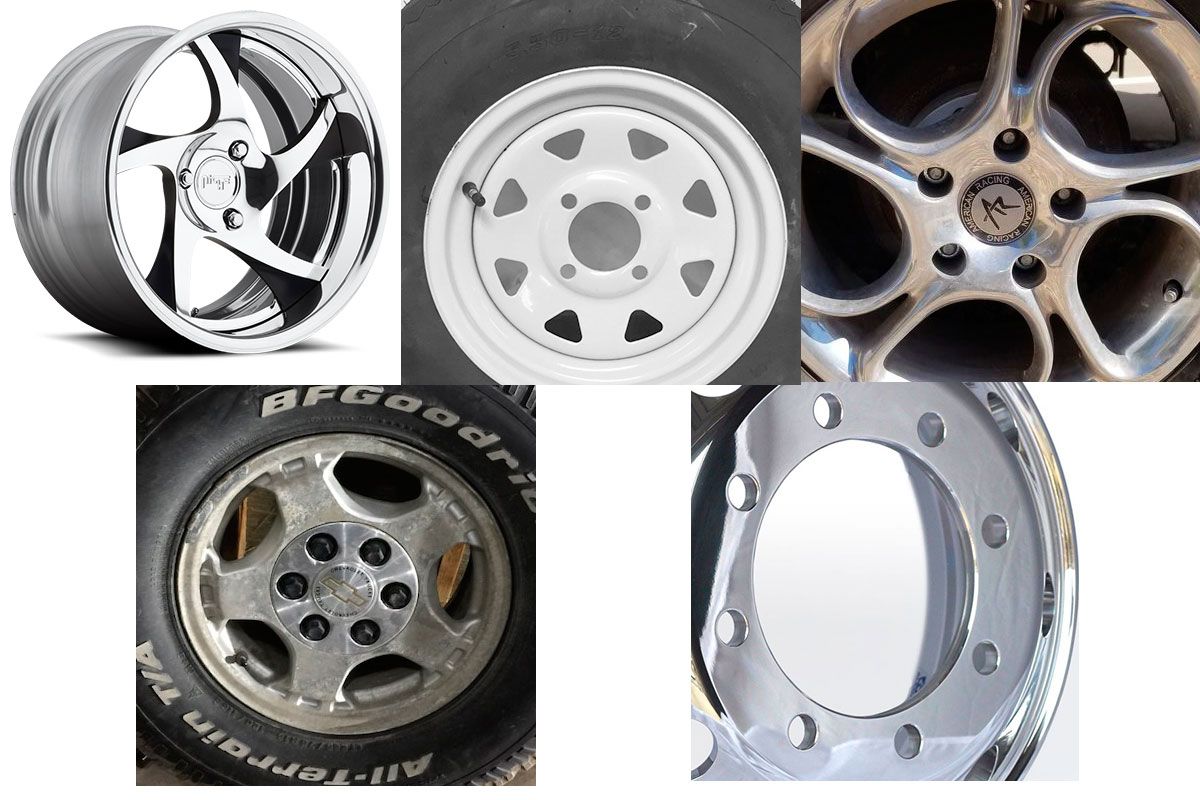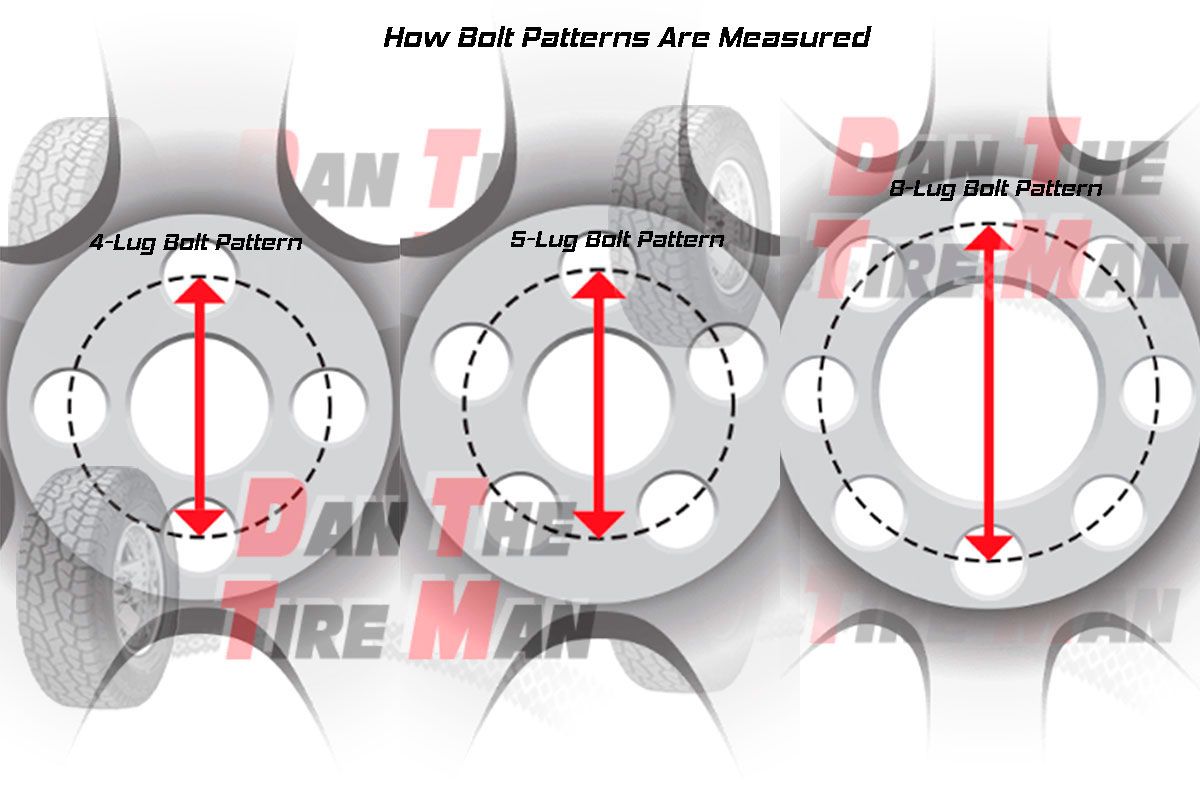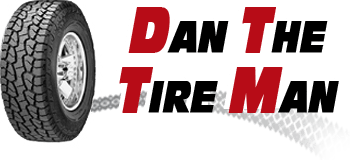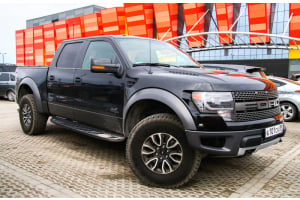
All images by author unless otherwise noted.
Your vehicle’s wheel lugs are what keep the wheels secured to your vehicle. There are anywhere from three to eight of these lugs spread evenly around the center hub of the wheel and axle. The arrangement of how they are spaced around that hub is called the wheel’s bolt pattern. The vehicle’s bolt pattern will determine which wheels of a given diameter and width will fit and which won’t.
Even If you look really close, automotive wheel bolt patterns don’t look very different. Sure, it’s easy to count the number of lugs a wheel has. However, what’s not so obvious is that two wheels with a four-bolt pattern might not fit the same cars. Manufacturers usually use a single bolt pattern for all of their vehicles of a specific size, but not always. It’s also common for different manufacturers to use different bolt patterns than other manufacturers.
How a Wheel’s Bolt Pattern Is Measured

Many people think that a wheel’s bolt pattern is the distance between adjoining lugs. This isn’t the case however. A wheel’s bolt pattern is the diameter of a circle drawn through the centers of each of the wheel’s bolts. Bolt patterns with an even number of lugs are easier to measure than five-lug patterns; simply measure from the center points of the lugs at the top and bottom of the pattern. However, you can draw that circle through the exact center of all five lugs and measure the diameter of the circle to get the bolt pattern.
How Bolt Pattern Is Written
A “code” consisting of two numbers is used to illustrate the bolt pattern-for instance a typical four lug wheel has a 4-4.25” bolt pattern. This means the wheel has four lugs that are arranged around a circle 4.25” in diameter. A wheel with a bolt pattern of 8-7.87” has eight lugs arranged in a circle 7.87” in diameter. The table below lists common bolt patterns for four-, five-, six-, and eight-lug wheels.
4-Lug Bolt Pattern Conversions (mm to Inches) | ||||
4-98mm→4-3.86” | 4-100mm→4-3.94” | 4-108mm→4-4.25” | 4-110mm→4-4.33” | 4-114.3mm→4-4.5” |
5-Lug Bolt Pattern Conversion (mm to Inches) | ||||
5-98mm→5-3.86” | 5-100mm→5-3.94” | 5-108mm→5-4.25” | 5-110mmć5-4.33” | 5-112mm→5-4.41” |
5-114.3mm→5-4.5” | 5-115mm→5-4.52” | 5-120mm→6-4.72” | 5-120.7mm→5-4.75” | 5-127mm→5-5” |
5-130mm→5-5.12” | 5-135mm→5-5.3” | 5-139.7mm→5-5.5” | 5-150mm→5-5.91” | 5-155mm→5-6.1” |
5-165.1mm→5-6.5” | 5-205mm→5-8.07” |
|
|
|
6-Lug Bolt Pattern Conversion (mm to Inches) | ||||
6-114.3mm→6-4.5” | 6-115mm→6-4.52” | 6-127mm→6-5” | 6-132mm→6-5.2” | 6-135mm→6-5.3” |
6-139.7mm→6-5.5” |
|
|
|
|
8-Lug Bolt Pattern Conversion (mm to Inches) | ||
8-165.1mm→8-6.5” | 8-170mm→8-6.69” | 8-200mm→8-7.87” |
Dual Bolt Pattern Wheels

Image courtesy VMS Racing
The table above lists all the common bolt patterns that manufacturers are currently using. However, many manufacturers produce wheels with dual bolt patterns. This allows manufacturers to make a single wheel that fits a much larger segment of the automotive population. One example of a dual bolt pattern wheel is one that has ten bolt holes to allow for the wheel to be used on vehicles with a bolt pattern of 5-100 or one with a 5-114.3mm bolt pattern. This wheel is said to have a 5-100/114.3 mm bolt pattern. This is only possible with bolt patterns that aren’t close enough that one lug hole will end up making another hole bigger or wider.
Dan the Tire Man would be happy to help you measure your bolt pattern and determine which wheels would be the best fit for your vehicle.





